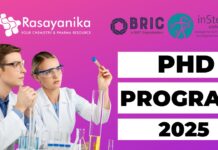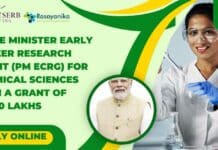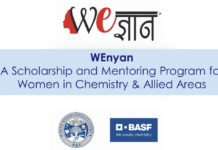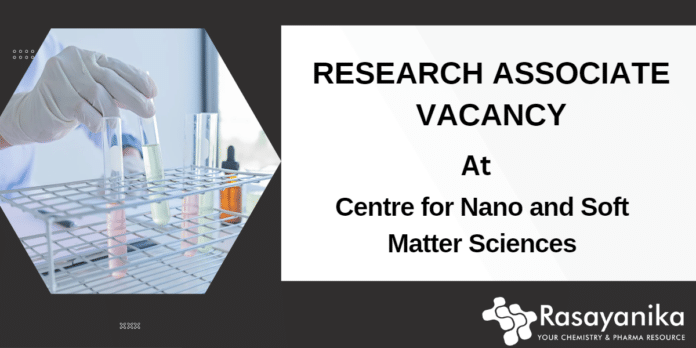Vacancy at the Centre for Nano and Soft Matter Sciences for chemistry candidates for the position of research associate. Apply online by chemistry candidates.
Position: Research Associate (RA-I) OR Provisional Research Associate (PRA)
Project Title: Dual fluorescent nanoparticles derived from excited-state intramolecular proton transfer (ESIPT) active liquid crystal chiral ligands”
Period of the project: 9 Months (1st July 2023 to 31st March 2024)
Last date for the receipt of the application: 10-07-2023
Qualification and experience :
- The eligible candidates who have obtained a Ph.D. degree in Organic Chemistry/Materials Chemistry from a recognized Universities/Institute will be preferred for the RA-I position.
- The candidates who have submitted their thesis recently for the award of the doctoral degree in Organic Chemistry/Materials Chemistry can also apply; such a candidate will be appointed as a PRA.
Remuneration :
RA-I: Monthly Fellowship – 58, 280/- (Rs 47,000/- + HRA 24 %) p.m.
PRA: Consolidated emoluments Rs.34,000/- p.m.
Hey!!! We are attaching the expected question and answers below. Please go through it while you are preparing for the interview for the Research position for chemistry candidates. Best wishes for your interview.
Question: Can you provide an overview of your experience and qualifications in the field of Organic Chemistry/Materials Chemistry?
Answer: I hold a Ph.D. degree in Organic Chemistry/Materials Chemistry from a recognized university. During my doctoral research, I focused on synthesizing and characterizing novel materials with applications in various fields. I have hands-on experience in designing and conducting experiments, analyzing data, and presenting research findings. My expertise lies in the synthesis and characterization of organic compounds and materials, and I have published several research papers in reputable journals.
Question: Could you discuss your familiarity with excited-state intramolecular proton transfer (ESIPT) and its applications in the context of the project title?
Answer: I have a solid understanding of excited-state intramolecular proton transfer (ESIPT) and its significance in various areas of research, including materials chemistry. ESIPT involves the transfer of a proton between molecules in an excited state, resulting in unique photophysical properties. In the context of the project, I am familiar with utilizing ESIPT-active liquid crystal chiral ligands to develop dual fluorescent nanoparticles. I am well-versed in the synthesis and characterization techniques required to study and optimize ESIPT-based systems.
Question: Have you worked on similar projects involving the synthesis and characterization of nanoparticles? If so, could you elaborate on your experience?
Answer: Yes, I have previous experience working on projects involving the synthesis and characterization of nanoparticles. In one project, I synthesized semiconductor nanoparticles and studied their optical properties and surface functionalization for specific applications. I employed various techniques such as TEM, XRD, and spectroscopy to characterize the nanoparticles’ size, structure, and composition. Additionally, I conducted stability and toxicity assessments of the nanoparticles. My experience in nanoparticle synthesis and characterization will be valuable in the context of this project.
Question: How do you approach experimental design and data analysis in your research work?
Answer: When designing experiments, I focus on clearly defining the research objectives and hypotheses. I carefully plan the experimental procedures, considering variables, controls, and appropriate techniques. During data analysis, I employ statistical methods and data visualization tools to extract meaningful insights. I also pay attention to the reliability and reproducibility of results. In addition, I have experience using software tools like MATLAB and Python for data analysis and modeling, which enable me to extract valuable information from complex datasets.
Question: Can you discuss your ability to work effectively in a team environment and collaborate with colleagues from diverse backgrounds?
Answer: I strongly believe in the power of teamwork and collaboration in achieving research goals. I have experience working in multidisciplinary teams, collaborating with scientists and researchers from diverse backgrounds. I am an effective communicator and listener, which helps me understand and incorporate different perspectives. I am open to sharing ideas, receiving feedback, and actively contributing to group discussions. My adaptability, strong interpersonal skills, and respect for diverse opinions make me a valuable team member in any research setting.

















































